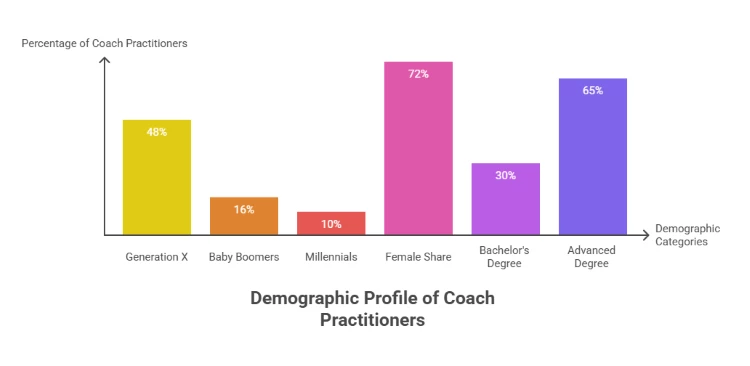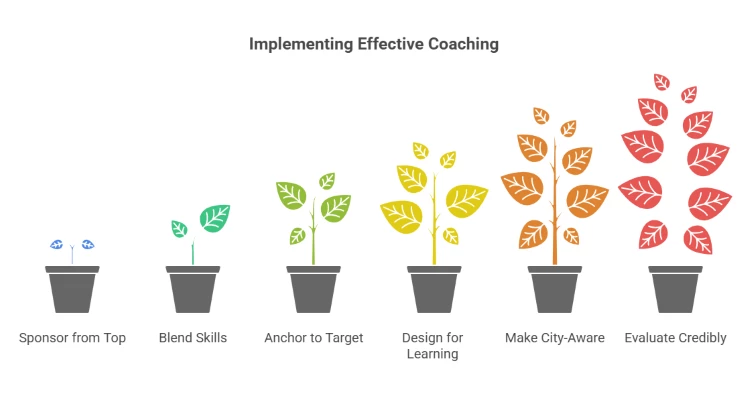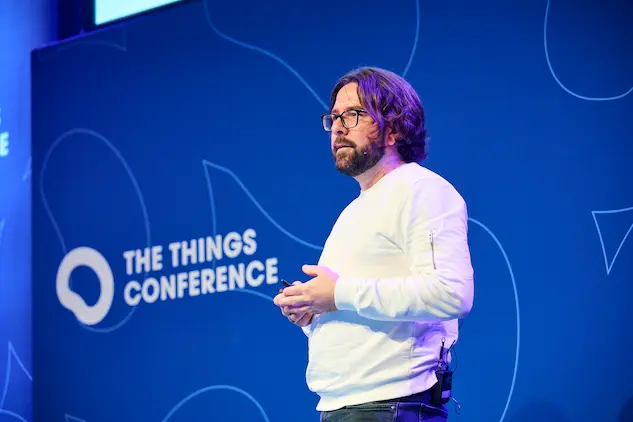At 03:07 on a wet Tuesday, a sustainability manager at a global retailer finally gave up trying to sleep. Scope-3 questions kept circling: suppliers, transport, consumer use. She had the dashboards and the decarbonisation plan, yet her team felt drained, split between urgency and fatigue. HR proposed a pilot: climate coaching. Not “soft PR,” but structured support to turn anxiety into agency, connect values with decisions, and translate net-zero targets into daily habits. Three months later, the team wasn’t just reporting; it was experimenting, sharing peer challenges, and building momentum one behaviour at a time.
What is climate coaching?
Climate coaching – also known as sustainability coaching or environmental coaching – is a specialised branch of professional coaching that supports personal, team and organisational change in the context of the climate crisis and sustainable development. It usually unfolds in three complementary streams that companies can combine:
- Coaching for climate action – working on goals, projects, and decisions that reduce environmental impact at team and business-unit level (e.g., redesigning travel, materials, energy, logistics).
- Climate aware coaching – integrating sustainability questions into all coaching conversations so that ecological awareness becomes a leadership competency, not an add-on.
- Coaching for eco-anxiety – helping people who experience fear, apathy or exhaustion about climate change to restore equilibrium and take constructive action.
Why companies are investing in climate coaching
The professional coaching industry has grown rapidly, creating the infrastructure for such niche practices. In its latest global study, the International Coaching Federation estimates US$4.564 billion in annual industry revenue, a 60% increase over 2019, based on 14,591 responses across 157 countries. This expanding base makes it feasible for firms to source coaches with climate literacy rather than generic leadership profiles.

Source: Global Coaching Study: 2023 Executive Summary
There is also a clear human-capital imperative. Research from The Conference Board reports that 43% of workers experience eco-anxiety “often” or “almost always,” with impacts on motivation and focus. Addressing this isn’t only a wellness issue. It’s material to execution. Teams paralysed by worry struggle to deliver the transitions that sustainability roadmaps demand.
From strategy to practice: what climate coaching looks like inside firms
In practice, a climate-coaching engagement might run as a six-month cycle aligned to a material target (for example, cutting business-unit waste or energy intensity). Coaching for climate action helps teams break a large target into behavioural experiments – “What can we try next sprint?” – and track adoption. Sustainability coaching weaves sustainability prompts into decision-making (“What’s the lifecycle impact?” “What would a regenerative option change?”) so climate considerations appear in routine trade-offs, not just in ESG updates. Coaching for eco-anxiety provides psychological scaffolding: acknowledging grief, reframing fatigue, and restoring a sense of choice and contribution.
Evidence that coaching cultures correlate with stronger performance continues to accumulate in industry research. ICF’s longitudinal programmes with HCI (Human Capital Institute) highlight links between coaching culture, engagement and talent outcomes in multiple cycles. While causality is complex, these findings support the idea that how people change can be as decisive as what they change.
Real-world evidence also supports the behavioural impact of climate and sustainability coaching. A well-documented case from HSBC Hong Kong demonstrated that structured environmental education and coaching-style training led to measurable shifts in employees’ everyday habits — including reduced paper use, more energy-efficient commuting and higher participation in sustainability programmes. The study recorded statistically significant changes in staff attitudes and behaviour following the initiative. At a broader scale, data from the ICF–HCI Coaching Culture Research Series show that organisations with mature coaching cultures report higher employee engagement and stronger capability to sustain innovation, including in ESG and sustainability programmes.

Together, these findings illustrate that climate-aware coaching can transform sustainability from a corporate policy into consistent, measurable practice.
Cities matter and they can use climate coaching too
For urban leaders, the climate-change transition stacks technical complexity on top of political and social complexity. Cities must mobilise thousands of actors – utilities, small businesses, civil servants, residents – and keep them aligned over years. That is why climate coaching isn’t just a corporate tool. It’s an emerging skill set for smart-city governance and urban resilience.
For example, Amsterdam offers a useful lens. In 2020, the city adopted a circular-economy strategy explicitly framed by the “City Doughnut” – a model that balances social foundations with planetary boundaries (Amsterdam Circular 2020–2025 Strategy). While the model itself is not “coaching,” municipal teams and local coalitions have used doughnut-style facilitation and reflective practices to align departments and partners around practical shifts from construction materials to neighbourhood initiatives. Environmental coaching methods can plug into these programmes: they help managers navigate trade-offs, build empathy with citizens, and sustain cross-departmental collaboration.
The professional field is consolidating
The Climate Coaching Alliance (CCA) and Coaching at Work have convened an annual Climate Coaching Action Day since 2020. The International Society for Coaching Psychology (ISCP) launched a Faculty of Climate Change and Coaching Psychology in December 2021 to develop the evidence base and professional. Universities are also entering the space. For example the FXB Center for Health & Human Rights at Harvard announced a multi-month Global COACH programme aimed at equipping professionals to organise climate-health solutions. The training ecosystem is far from uniform, but the direction is clear: more formal curricula, more sector-specific coaching, and better integration with climate science and public policy.
What success looks like in sustainability coaching (and how to measure it)
Companies and city teams should treat climate coaching like any other performance intervention: define scope, metrics and learning loops early.
- Engagement and culture: track participation in green initiatives, peer-led experiments per quarter, and sentiment shifts in pulse surveys (anchor these to wider coaching-culture benchmarks from ICF–HCI research; coachingfederation.org).
- Operational spill-over: monitor the rate at which coached teams translate sustainability goals into routine standards (procurement criteria, design checklists, travel defaults).
- Well-being and retention: watch indicators where eco-anxiety and burnout can erode execution; align with HR data. The Conference Board’s finding of 43% eco-anxiety prevalence provides a baseline to justify interventions (conference-board.org, 2023).
Getting started: six practical moves for climate and environmental coaching
- Sponsor from the top. Senior leaders should model participation — one coached conversation at a time.
- Blend skills. Select coaches who pair coaching mastery with climate and systems literacy; brief them on your material topics.
- Anchor to a target. Couple coaching cycles to a concrete sustainability objective (e.g., circular materials pilot, fleet transition), not only to generic leadership aims.
- Design for learning. Build a cadence of short experiments, retrospective reviews, and cross-team knowledge sharing.
- Make it city-aware. For municipal contexts, align coaching cohorts with place-based programmes (housing retrofits, mobility, heat adaptation) so that neighbourhood managers share a language and a rhythm.
- Evaluate credibly. Use pre-/post- measures tied to participation, behaviour, and selected performance indicators; compare to adjacent teams without coaching where feasible. Evidence on coaching’s organisational effects is growing but still mixed on causal claims, so treat evaluation as hypothesis-driven (ICF research portal).

The live ending and a wider horizon
Back to that retail team: months after the pilot, its product leads had baked low-impact packaging trade-offs into sprint rituals, procurement had introduced a circularity checklist, and junior staff were hosting lunchtime clinics on “micro-actions that move the KPI.” The data will keep evolving; dashboards will change. But something more durable has emerged – a culture where sustainability isn’t a quarterly event but an everyday habit.
Cities and companies that will thrive through the 2030s won’t merely publish targets; they’ll coach their people and partners into new ways of thinking and doing. The industry capacity is now there. The signals from the profession are real. And cities are already reframing prosperity within planetary limits
Read more about sustainable business here


